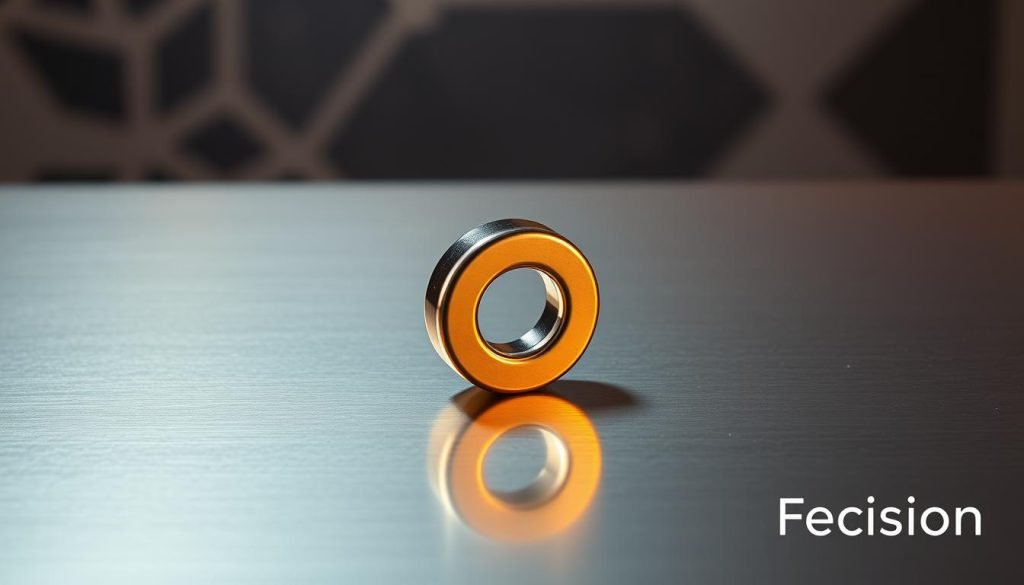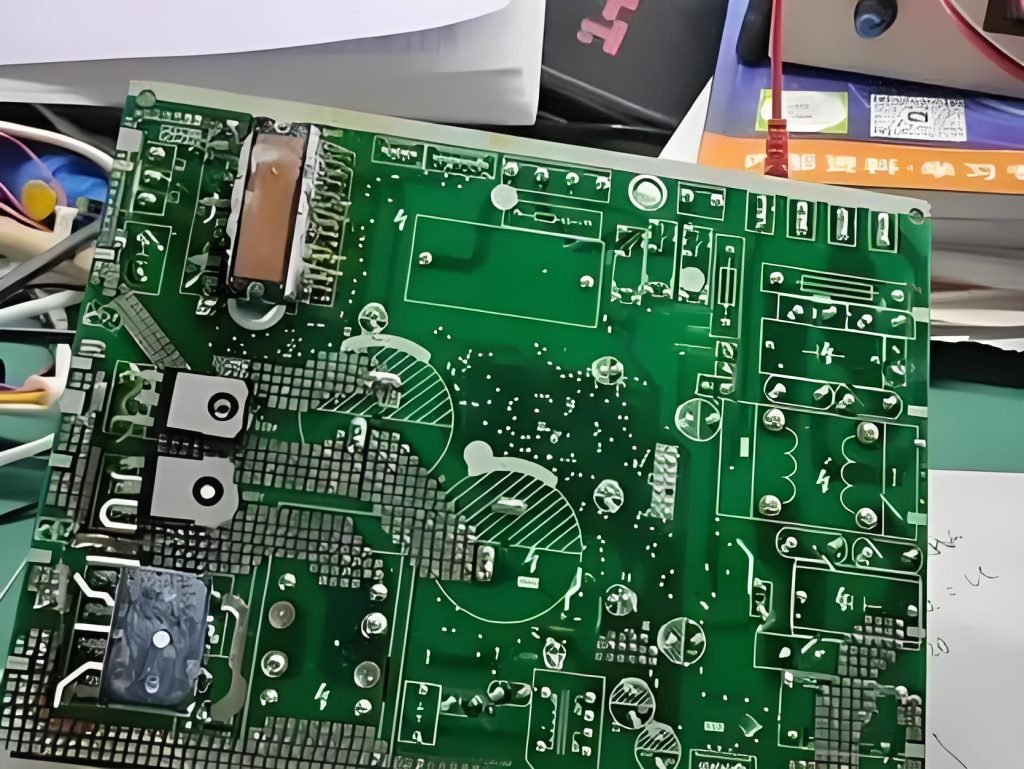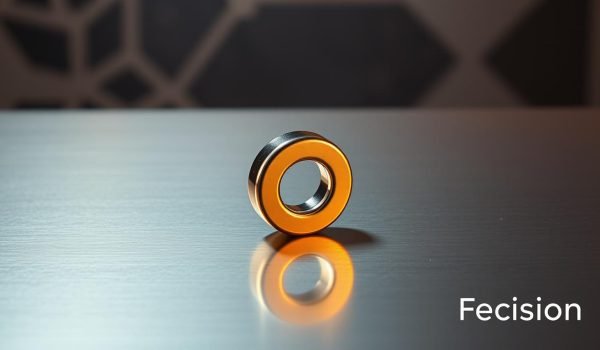You may have wondered about the magnetic properties of tin, a versatile metal used in various manufacturing applications. Tin, or Sn, is generally considered non-magnetic, but its behavior is more nuanced than that.
As a paramagnetic metal, tin is weakly attracted to magnetic fields, but this effect is very weak. The reason lies in tin’s atomic structure and electron configuration, which influences its interaction with magnetic fields. Understanding tin’s properties is crucial for engineers and manufacturers working with this material, as it affects product design, performance, and compatibility with other components.
Tin is used in electronics, medical devices, and other industries where magnetic interference must be avoided. Its unique properties make it valuable in these applications, and exploring its magnetic behavior can provide insights into its potential uses.

What Is Tin?
Tin, with the symbol Sn, is a metal that has been crucial in various industries. You may have come across tin in everyday objects, but understanding its fundamental properties can provide valuable insights into its applications
Physical and Chemical Properties of Tin
Tin is known for its silvery-white appearance and its malleability, making it a versatile material for various applications. It has a melting point of approximately 231.9°C and a boiling point of 2602°C. Tin’s electron configuration is [Kr] 4d¹⁰ 5s² 5p², which determines its valence state and chemical reactivity patterns. As an element in group 14 of the periodic table, tin exhibits properties that are influenced by its position between metals and metalloids.
Is Tin Magnetic?
Understanding tin’s magnetic properties involves delving into its classification among magnetic materials. You might be surprised to learn that tin doesn’t exhibit strong magnetic properties like some other metals.
Defining Magnetism in Materials
Magnetism in materials is primarily determined by the arrangement of electrons and their interaction with magnetic fields. Materials can be classified based on their magnetic behavior, ranging from ferromagnetic materials that are strongly attracted to magnets, to paramagnetic and diamagnetic materials that exhibit weaker or no magnetic attraction.
Tin’s Classification: Paramagnetic vs. Ferromagnetic
Tin is classified as a paramagnetic material, meaning it exhibits a weak attraction to magnetic fields. Unlike ferromagnetic materials such as iron, cobalt, or nickel, tin loses its magnetic attraction as soon as the external magnetic field is removed. This characteristic is due to tin’s electron configuration, which doesn’t support the strong magnetic properties seen in ferromagnetic materials. As a result, tin is considered non-magnetic for most practical purposes, making it suitable for applications where magnetic interference needs to be minimized.
You’ll discover that tin’s paramagnetic nature has significant implications for its use in various industries, from electronics to manufacturing, where its non-magnetic properties are valued.
Understanding Tin’s Magnetic Properties
Delving into tin’s magnetic properties, we uncover the subtle interactions between its electrons and external magnetic fields. Tin is often considered non-magnetic, but it exhibits paramagnetic properties when exposed to an external magnetic field.
Electron Configuration and Magnetic Behavior
Tin’s electron configuration plays a crucial role in its magnetic behavior. Although tin is not ferromagnetic, its electron orbitals generate a weak magnetic moment when an external magnetic field is applied. This results in a slight attraction to the magnetic field, a characteristic of paramagnetic materials. The presence of unpaired electrons in tin’s atomic structure contributes to this paramagnetic response.
How Tin Responds to Magnetic Fields
When tin is placed in a magnetic field, its electron orbitals temporarily align, causing a weak attraction. This alignment is not permanent and disappears once the external magnetic field is removed. The strength of the external magnetic field affects tin’s paramagnetic response; stronger fields produce a slightly stronger attraction. Understanding this behavior is crucial in manufacturing environments where magnetic fields may be present.
In practical terms, tin’s response to magnetic fields is temporary and weak, distinguishing it from ferromagnetic materials that exhibit strong attraction and diamagnetic materials that show weak repulsion. This unique property of tin has implications for its use in various applications, particularly where magnetic interference needs to be minimized.
Factors Affecting Tin’s Magnetic Properties

Tin is a metal with unique properties, and its magnetic behavior is influenced by several factors. You need to understand these factors to appreciate how tin responds to different conditions.
Temperature Effects on Tin’s Magnetism
The temperature at which tin is used can significantly impact its magnetic properties. As the temperature changes, the alignment of tin’s electrons is affected, thereby altering its magnetic response. You should consider the operating temperature when designing applications that involve tin.
Purity Levels and Magnetic Response
The purity of tin is another critical factor that affects its magnetic behavior. Impurities in tin can alter its electron configuration, leading to changes in its magnetic properties. You need to ensure that the tin used in your application is of the required purity level to achieve the desired magnetic response.
External Field Strength Considerations
The strength of the external magnetic field is a crucial factor that influences tin’s magnetic properties. A stronger external field can orient more electron spins along its direction, increasing tin’s magnetization. You should consider the strength of the external magnetic field when designing applications that involve tin, as it directly impacts the metal’s magnetic behavior.
Exploring the Magnetism of Tin Alloys
Alloying tin with other elements can dramatically alter its magnetic behavior. When tin is combined with other metals, the resulting alloy’s magnetic properties can be significantly different from those of pure tin.
Common Tin Alloys and Their Magnetic Characteristics
Tin is often alloyed with metals like lead, copper, and silver to create materials with specific properties. For instance, tin-lead alloys are commonly used in soldering due to their low melting point. The addition of these metals can change tin’s magnetic characteristics, sometimes making the alloy more diamagnetic or even introducing ferromagnetic properties.
How Alloying Elements Alter Tin’s Magnetic Properties
The introduction of ferromagnetic elements like iron or nickel into tin alloys can significantly enhance their magnetic response. This is because these elements bring unpaired electrons into the alloy’s structure, potentially creating a net magnetic moment. The extent to which these elements affect the magnetic properties depends on their concentration and how they alter the alloy’s crystal structure.
Applications Leveraging Tin’s Non-Magnetic Nature

You can leverage tin’s non-magnetic nature in numerous applications, from electronics to industrial manufacturing. Tin’s unique combination of properties makes it a valuable material in various industries where magnetic interference must be minimized.
Electronics and Electrical Industry Uses
In the electronics and electrical industries, tin is used extensively due to its non-magnetic properties. Tin coatings on components and connectors prevent magnetic interference, ensuring the reliability and performance of electronic devices. You can find tin used in the manufacture of circuit boards, switches, and other critical components.
Medical and Scientific Applications
Tin’s non-magnetic nature is particularly beneficial in medical and scientific applications. In medical devices, such as MRI machines and other diagnostic equipment, tin’s non-magnetic properties prevent interference with sensitive instruments. Additionally, tin is used in scientific research equipment where magnetic stability is crucial.
Industrial and Manufacturing Benefits
In industrial settings, tin’s non-magnetic properties, combined with its corrosion resistance and strength, make it an ideal material for various manufacturing processes. Tin coatings are used to protect equipment from corrosion without introducing magnetic properties that could interfere with control systems or sensors. You can leverage these benefits to improve the performance and longevity of your manufacturing equipment.
Conclusion
With a comprehensive understanding of tin’s magnetic behavior, you can now appreciate its value in different applications. Tin (Sn) is a paramagnetic metal, meaning it’s not attracted to a magnetic field under normal conditions. Its weak paramagnetism makes it generally considered non-magnetic, which is valuable in many applications where magnetic interference must be avoided.
Tin is used in various industries, including electronics, medical devices, and aerospace components, due to its non-magnetic properties and material stability. Alloying tin with other elements can dramatically alter its magnetic properties, creating materials with tailored characteristics. Understanding tin’s magnetic properties is crucial for manufacturers and engineers, as it impacts product design, performance, and compatibility. By grasping tin’s capabilities and limitations, you can make informed decisions about using tin in your manufacturing processes.
FAQ
Tin is a post-transition metal with a silvery-white appearance, known for its corrosion resistance and ability to form alloys with other metals. Its electron configuration plays a crucial role in determining its magnetic behavior.
The magnetic properties of tin alloys depend on the elements alloyed with tin. For instance, tin-nickel alloys can exhibit different magnetic characteristics compared to pure tin, depending on the proportion of nickel.
Tin’s electron configuration, with its filled and partially filled orbitals, determines its paramagnetic behavior. The arrangement of electrons in tin results in a weak response to magnetic fields.
Yes, tin and its alloys can be used in various high-temperature applications. Their magnetic properties remain relatively stable across a range of temperatures, although extreme temperatures can affect their behavior.
Tin’s corrosion resistance, ability to form alloys, and non-magnetic nature make it a valuable material in various industrial applications, including coating, soldering, and plating.




